Why Finding the Best Cream for Aches and Pains Matters
The best cream for aches and pains depends on your specific pain type and needs. Here's a quick guide:
- Best Overall: Biofreeze Professional Pain Relief Gel (5% menthol for fast cooling relief)
- Best for Arthritis: Voltaren Arthritis Pain Gel (1% diclofenac sodium NSAID)
- Best for Nerve Pain: Neuropasil (natural ingredients including menthol, aloe, and urea)
- Best Numbing Cream: Aspercreme with Lidocaine (4% lidocaine maximum strength)
- Best Budget Option: Tiger Balm Ultra Strength (camphor and menthol blend)
Whether you're recovering from an injury or managing chronic discomfort, muscle and joint pain shouldn't slow you down. Topical pain relief creams offer a targeted, fast-acting solution without the side effects of oral medication. Research shows that topical analgesics can be highly effective, with some NSAID creams reducing pain by 50 percent or more for many users. They work by penetrating the skin to numb the area, reduce inflammation, or create sensations that block pain signals.
With so many products containing different active ingredients like menthol, lidocaine, or NSAIDs, choosing the right one can be overwhelming. Some creams cool, others warm, and they target different types of pain, from surface muscle soreness to deep joint inflammation.
I'm Tony Enrico, and through my work with Neuropasil, I've helped thousands find effective relief with advanced topical formulas. In this guide, I'll walk you through the best cream for aches and pains options for 2024, explaining how they work and how to choose the right one for you.
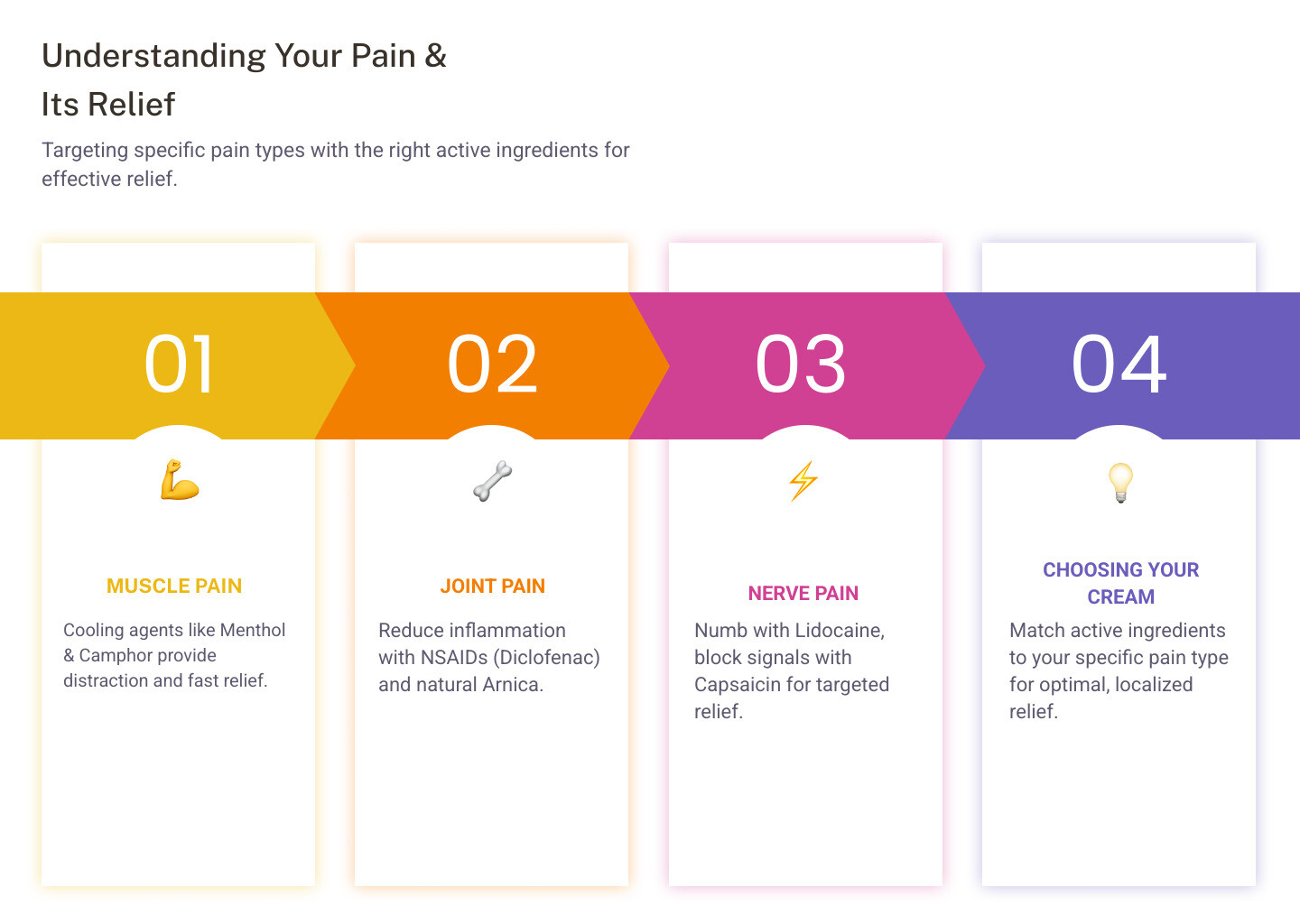
Best cream for aches and pains definitions:
How Topical Pain Relief Creams Work
Topical pain relief creams, or analgesics, work locally by absorbing through your skin to act directly on the tissues that hurt. This targeted approach is a major advantage, resulting in fewer systemic side effects compared to pills.
Instead of healing the source of pain, these creams interfere with the neural pathways that transmit pain signals to your brain. They minimize your perception of soreness rather than aiding muscle recovery directly. This works through the gate control theory of pain: when you stimulate nerves with sensory input, like the tingling or cooling from a cream, those signals can "close the gate" to pain signals traveling to the brain. The best cream for aches and pains leverages this exact mechanism.
Different active ingredients use various strategies to interrupt pain:
- Counterirritants create hot or cold sensations that distract your brain.
- Anesthetics numb the area, reducing what you feel.
- NSAIDs (Nonsteroidal Anti-Inflammatory Drugs) reduce inflammation in the affected tissues.
- Natural ingredients often provide anti-inflammatory benefits or soothing sensations.
Topical analgesics are a vital part of modern pain management, with research demonstrating their effectiveness in providing significant pain relief for many individuals.
Key Active Ingredients and What They Do
Understanding the active ingredients is key to choosing the right cream for your type of pain.
Menthol and camphor are classic counterirritants. Menthol delivers a cooling sensation, while camphor often creates warmth. Both stimulate sensory receptors to distract your brain from deeper pain. Tiger Balm Ultra Strength, for example, uses a potent blend of both.
Lidocaine is a local anesthetic that numbs the nerves where it's applied, blocking pain signals from reaching your brain. Over-the-counter products can contain up to 4% lidocaine, offering powerful numbing relief. Studies suggest lidocaine is particularly helpful for neck and nerve pain.
For inflammation-based pain like arthritis, diclofenac sodium is a key ingredient. This NSAID works by blocking the production of pain-signaling chemicals called prostaglandins. Voltaren Arthritis Pain Gel is a prime example, delivering prescription-strength relief directly to joints without the stomach issues of oral NSAIDs.
Capsaicin, derived from chili peppers, creates a warming sensation. It works by depleting Substance P, the chemical that sends pain messages. While it may sting initially, consistent use can significantly reduce chronic pain over a couple of weeks.
The rise of natural pain relief ingredients reflects a demand for gentler, plant-based solutions. These natural ingredients can work wonders for targeted relief. Arnica is a traditional herbal remedy for bruising and inflammation, with one study finding it as effective as ibuprofen for osteoarthritis pain. CBD (cannabidiol) is recognized for its potential anti-inflammatory benefits, interacting with the body's endocannabinoid system. Emu oil also has research suggesting anti-inflammatory properties that can reduce pain.
Products like Neuropasil combine several natural ingredients—aloe vera, urea, and menthol—to create a formula that targets nerve pain and muscle soreness while moisturizing sensitive skin. This gentle approach is ideal for those with skin sensitivities or who prefer natural alternatives.
Our Picks for the Best Cream for Aches and Pains in 2024
Finding the best cream for aches and pains means matching the right active ingredients to your discomfort. After evaluating dozens of products for formulation, effectiveness, and value, we've narrowed down our top picks for 2024.
Best Overall: Biofreeze Professional Pain Relief Gel
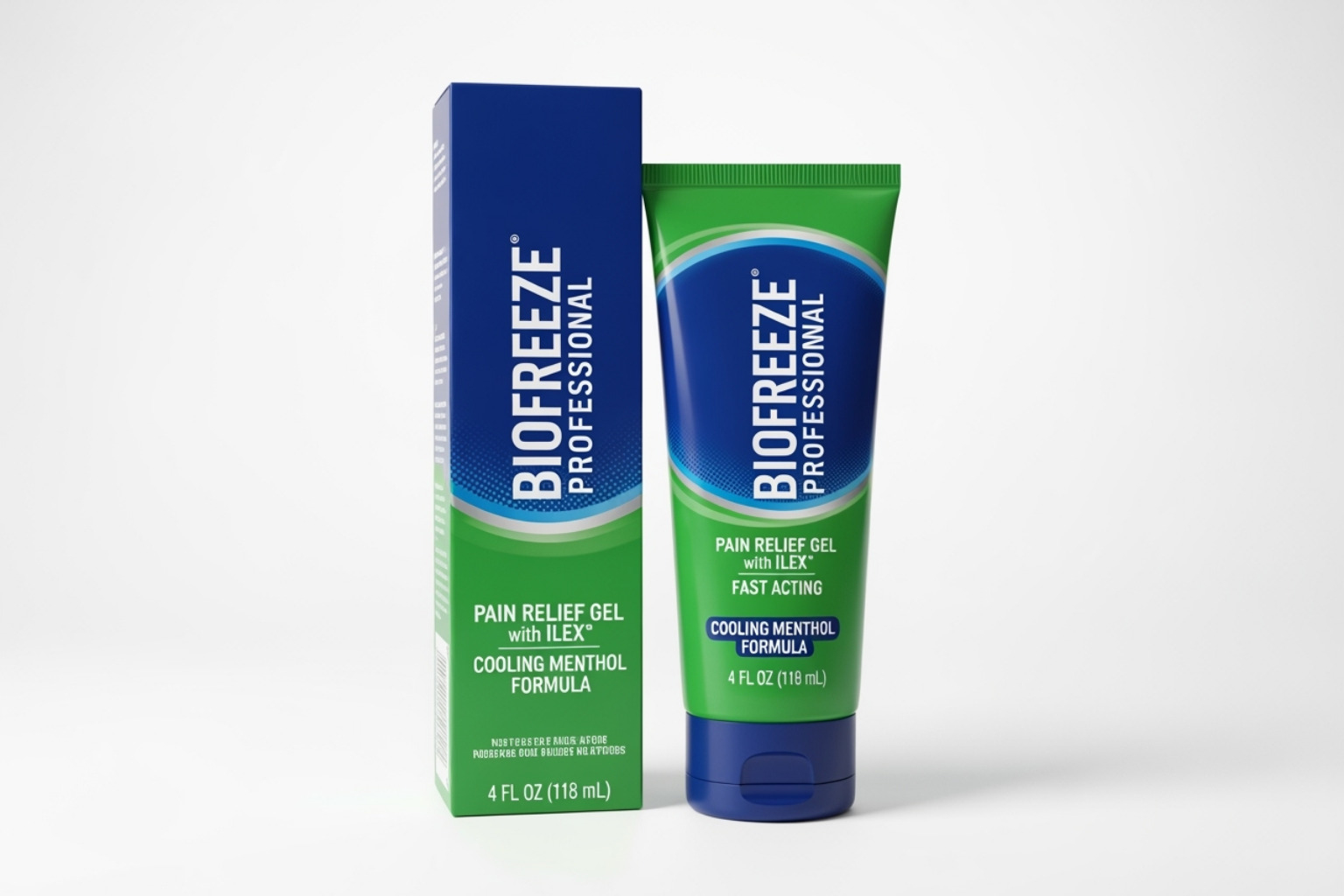
For fast, no-nonsense relief for general muscle soreness, Biofreeze Professional Pain Relief Gel is a top choice for healthcare professionals. Its formula contains 5% menthol, creating a signature cooling sensation that works quickly. The scent fades after application, and the gel absorbs fast without a greasy residue. It also includes aloe and vitamin E to keep skin soft, making it a reliable option for daily use, especially for lower back pain.
Best for Arthritis Pain: Voltaren Arthritis Pain Gel
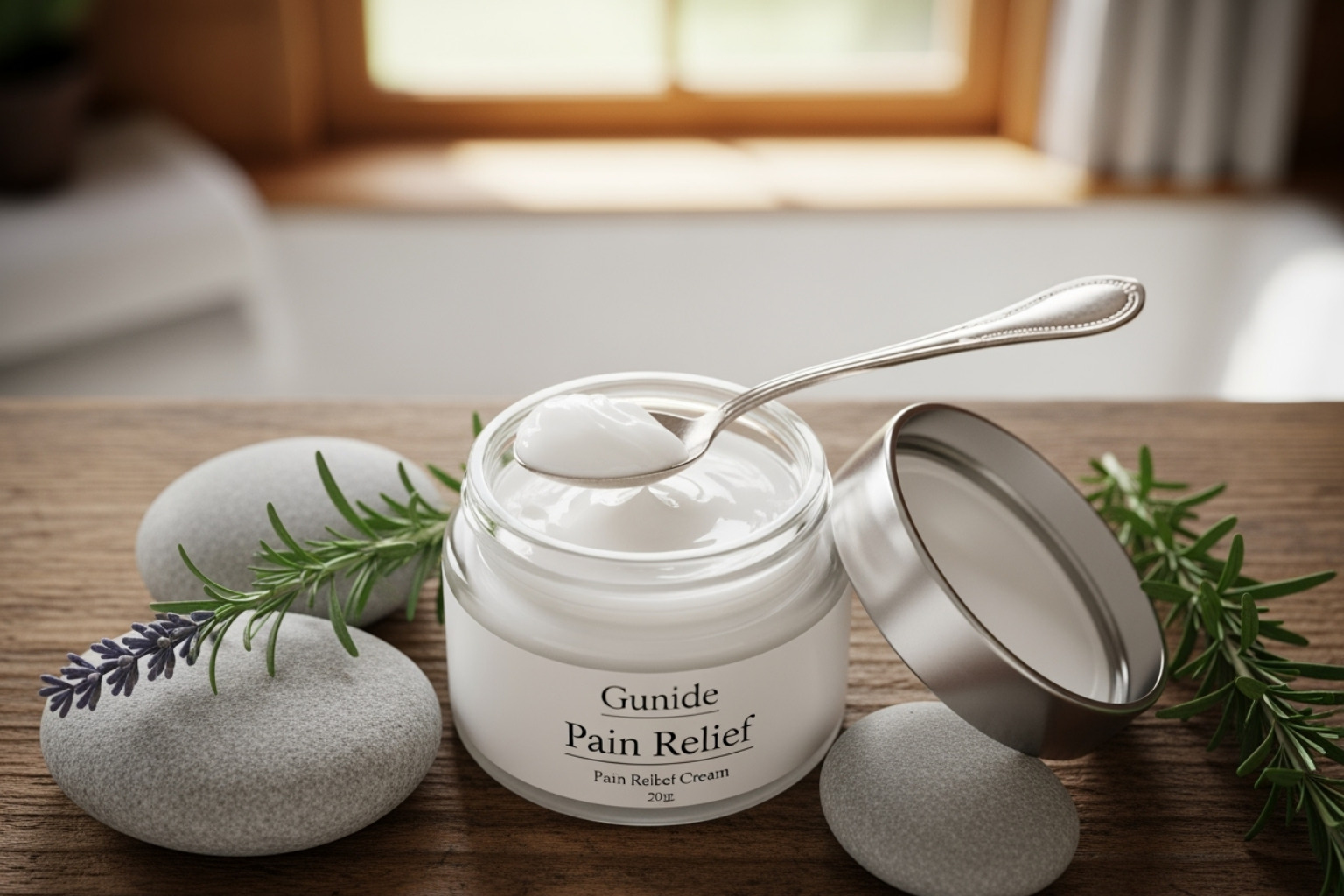
For stiff, painful arthritic joints, Voltaren Arthritis Pain Gel is in a league of its own. It's an FDA-approved topical NSAID that tackles inflammation at the source. The active ingredient, 1% diclofenac sodium, was previously available only by prescription. It penetrates deep to block the production of prostaglandins, the chemicals that cause inflammation and pain. Voltaren is unscented and features an Arthritis Foundation-commended easy-twist cap. It is approved for use up to 21 days, offering flexibility for managing chronic arthritis pain.
Best for Nerve Pain & Natural Ingredients: Neuropasil
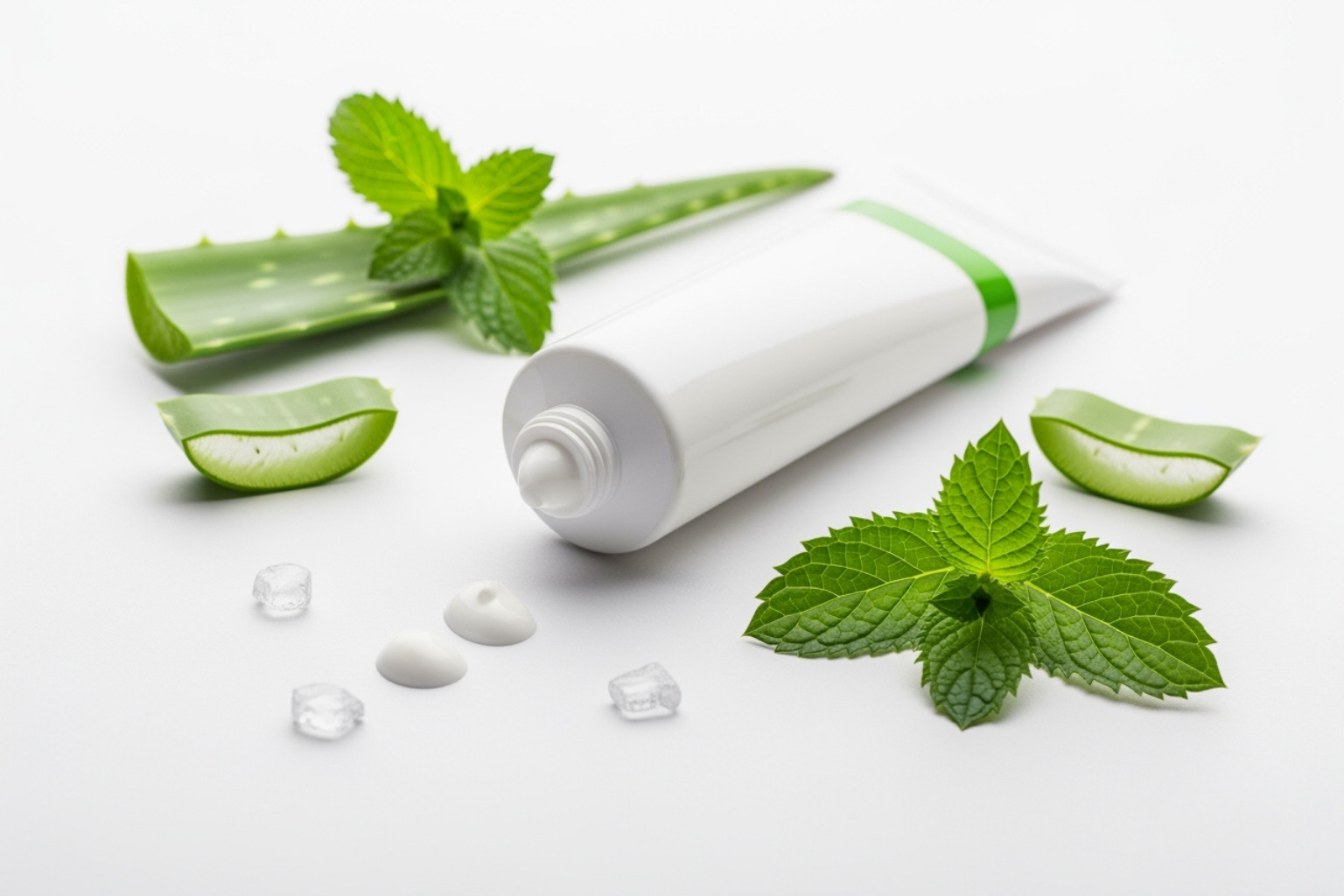
Nerve pain requires a specialized approach, which is why we developed Neuropasil with a blend of natural ingredients to calm irritated nerves gently. Our formula combines aloe vera, urea, and menthol. The menthol provides a soothing cooling sensation, while aloe vera and urea help the active ingredients penetrate deeply. These moisturizing components make the cream gentle enough for daily use on sensitive skin, which is crucial for conditions like neuropathy or sciatica.
Neuropasil's versatility is a key benefit. Our customers use it for fibromyalgia, plantar fasciitis, strains, sprains, and general joint, back, and neck pain. Athletes value it for post-workout recovery from intense muscle soreness. Learn more in The Complete Guide to Nerve Pain Relief Creams or see how our all-natural formula works.
Best Numbing Cream: Aspercreme with Lidocaine
To shut down pain signals completely, Aspercreme with Lidocaine is a powerful choice. With 4% lidocaine—the maximum strength available over the counter—it's a potent numbing cream. Lidocaine is a local anesthetic that blocks nerve signals, with most users feeling the effect in 5 to 10 minutes. Research confirms that lidocaine cream can effectively ease nerve pain and neck discomfort. The formula is fragrance-free, non-greasy, and includes aloe vera to keep skin healthy.
Best Budget Option: Tiger Balm Ultra Strength Ointment
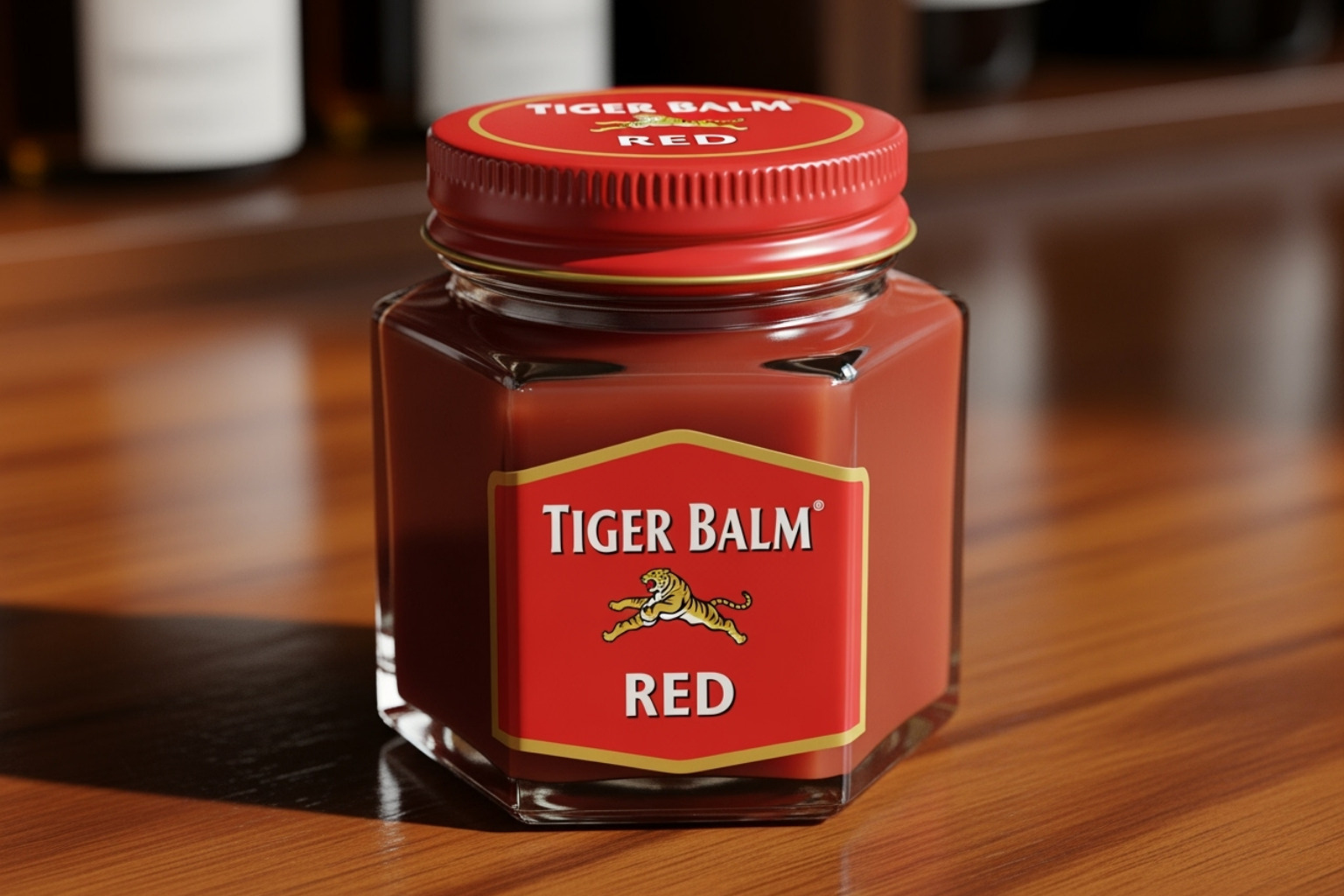
Tiger Balm Ultra Strength Ointment proves that effective relief doesn't have to be expensive. This classic formula contains 11% camphor and 11% menthol, a potent combination of counterirritants that create strong warming and cooling sensations. While it has a distinctive scent, the relief it provides is worth it for many. Users report feeling better within 20 minutes, with relief lasting for hours. A white, non-staining version is also available, making it a practical and powerful medicine cabinet staple.
How to Choose and Use Your Cream
Finding the best cream for aches and pains is the first step; using it correctly makes all the difference. Here’s how to choose wisely and apply it for maximum relief.
Factors to Consider When Choosing the best cream for aches and pains
- Active Ingredients: This is the most important factor. Match the ingredient to your pain. Menthol is great for muscle soreness, diclofenac sodium for inflammation, and lidocaine for numbing nerve pain.
- Pain Type: Muscle aches respond well to counterirritants (menthol/camphor). Joint pain from arthritis needs anti-inflammatories (diclofenac, arnica). Nerve pain may benefit from numbing agents (lidocaine) or soothing natural formulas like Neuropasil.
- Formulation: Gels and creams absorb quickly. Balms are thicker and offer more intense, lasting sensation. Roll-ons are convenient and mess-free. Patches provide sustained release but may not stick well on joints.
- Scent: Some products have strong medicinal scents, while others are unscented or have mild, natural aromas.
- Skin Sensitivity: Ingredients like capsaicin can cause stinging. Always do a patch test on a small area first.
- Price and Value: A little of a potent cream can go a long way, making a more expensive product economical over time.
Proper Application for Maximum Relief and Safety
- Read the Label: Always follow the product's specific instructions for use and frequency.
- Start with Clean, Dry Skin: Wash the area to ensure optimal absorption.
- Apply a Thin Layer: More isn't better. Gently massage the cream into the skin until it's absorbed.
- Wash Your Hands: After every application, wash your hands thoroughly with soap and water to avoid accidentally touching your eyes or face.
- Avoid Broken Skin: Never apply creams to open wounds, cuts, rashes, or near your eyes or mucous membranes.
- Follow Frequency Guidelines: Most creams recommend applying no more than 3-4 times daily to avoid skin irritation.
- Be Patient: While sensations may be immediate, true pain relief can take 30-60 minutes to kick in.
Potential Side Effects and When to See a Doctor
Topical creams are generally safer than oral medications, but be aware of potential issues.
- Minor skin reactions like redness or mild irritation are the most common side effects and usually fade quickly.
- Allergic reactions (rash, hives, itching) are rare but possible. This is why a patch test is important.
- Chemical burns are a serious but uncommon risk. This can happen if you apply creams too thickly or combine them with heating pads. The Mayo Clinic warns against using topical products with heat sources. If you experience severe burning, swelling, or blistering, stop use and seek medical attention.
- See a doctor if your pain persists for more than a few days, worsens, or if symptoms return after clearing up.
- Consult your healthcare provider before use if you are pregnant, nursing, have aspirin allergies, or take blood thinners.
Can I use topical creams with other treatments?
Yes, topical creams work well as part of a comprehensive pain management plan. They can be combined with the R.I.C.E. method (Rest, Ice, Compression, Elevation), physical therapy, and stretching. While they generally don't interact with oral pain medications, it's always best to check with your doctor or pharmacist before combining treatments, especially if you're on other medications.
Frequently Asked Questions about Creams for Aches and Pains
Here are answers to some of the most common questions about using the best cream for aches and pains.
How long does it take for pain relief cream to work?
The time it takes to feel relief varies. You might feel an immediate cooling or warming sensation, but the actual pain-relieving effects typically take between 30 minutes and 1 hour to become fully effective. Some products may work faster, with users reporting relief in as little as 20 minutes. Ingredients like capsaicin are different; they require consistent use for up to two weeks to achieve their full benefit. Always check the product's instructions for specific timing.
Can I use pain relief cream every day?
For many products, yes. Many topical creams are designed for daily use, a practice supported by pain management specialists for chronic conditions. Our own Neuropasil is formulated with gentle, natural ingredients, making it suitable for regular application. However, some products have specific limits. For example, Voltaren is recommended for use up to 21 days. Always follow the instructions on the product label. If you have concerns about long-term use, consult your healthcare provider, and stop use if you notice skin irritation.
What's the difference between a cooling and a warming cream?
Both cooling and warming creams work to relieve pain by creating a counter-irritant effect—a sensation that distracts your brain from the underlying pain.
Cooling creams contain ingredients like menthol and camphor. The cold sensation helps dull pain signals and can feel soothing on hot, inflamed areas, similar to applying an ice pack. They are often used for acute injuries and post-workout soreness.
Warming creams use ingredients like capsaicin or methyl salicylate to create a sensation of heat. This can help relax tight muscles and increase blood flow, which feels good on chronic stiffness or deep muscle aches.
Choosing between them often comes down to personal preference and what feels most comforting for your specific type of pain.
Conclusion
Finding relief from aches and pains is achievable with the right topical cream. These products offer a smart, localized approach, intercepting pain signals at the source with fewer side effects than oral medications. We've covered the science behind key ingredients like menthol, lidocaine, and diclofenac sodium, as well as effective natural options.
Our 2024 picks offer a solution for every need: Biofreeze for everyday soreness, Voltaren for arthritis inflammation, Aspercreme with Lidocaine for powerful numbing, and Tiger Balm for budget-friendly relief. And for those seeking a natural, versatile solution, Neuropasil is trusted by athletes and chronic pain sufferers alike for both nerve pain and muscle aches.
The key is to match your pain type with the right active ingredients and use the product correctly. By incorporating the best cream for aches and pains into your wellness routine, you can take charge of your comfort and stay active.
For those seeking natural, fast-acting relief that works for both nerve pain and sore muscles, we invite you to see what Neuropasil can do for you.
Find the right Neuropasil cream for your pain
References
This guide draws from credible medical research and expert insights to help you find the best cream for aches and pains. All factual claims are supported by the sources listed below.
Derry, S., et al. (2015). Topical NSAIDs for acute musculoskeletal pain in adults. Cochrane Database of Systematic Reviews. https://www.cochranelibrary.com/cdsr/doi/10.1002/14651858.CD007402.pub3/full
Grin, M. & Grin, S. (2020). Cannabidiol (CBD). StatPearls. https://www.ncbi.nlm.nih.gov/books/NBK556048/
Jeengar, M. K., et al. (2015). Emu Oil: A review of its therapeutic potential. BioMed Research International. https://www.ncbi.nlm.nih.gov/pmc/articles/PMC4438339/
Jorge, L. L., et al. (2011). Topical preparations for pain relief: efficacy and patient adherence. Journal of Pain Research. https://www.ncbi.nlm.nih.gov/pmc/articles/PMC3048583/
Mayo Clinic. (2023). Capsaicin (Topical Route): Precautions. https://www.mayoclinic.org/drugs-supplements/capsaicin-topical-route/precautions/drg-20062498
Melzack, R., & Wall, P. D. (1965). Pain mechanisms: A new theory. Science. https://www.science.org/doi/10.1126/science.150.3699.971
Sawynok, J. (2004). Topical and peripheral analgesics. Current Pharmaceutical Design. https://doi.org/10.2165/00003495-200464090-00002
Taylor, R. (2022). Diclofenac. StatPearls. https://www.ncbi.nlm.nih.gov/books/NBK557879/














